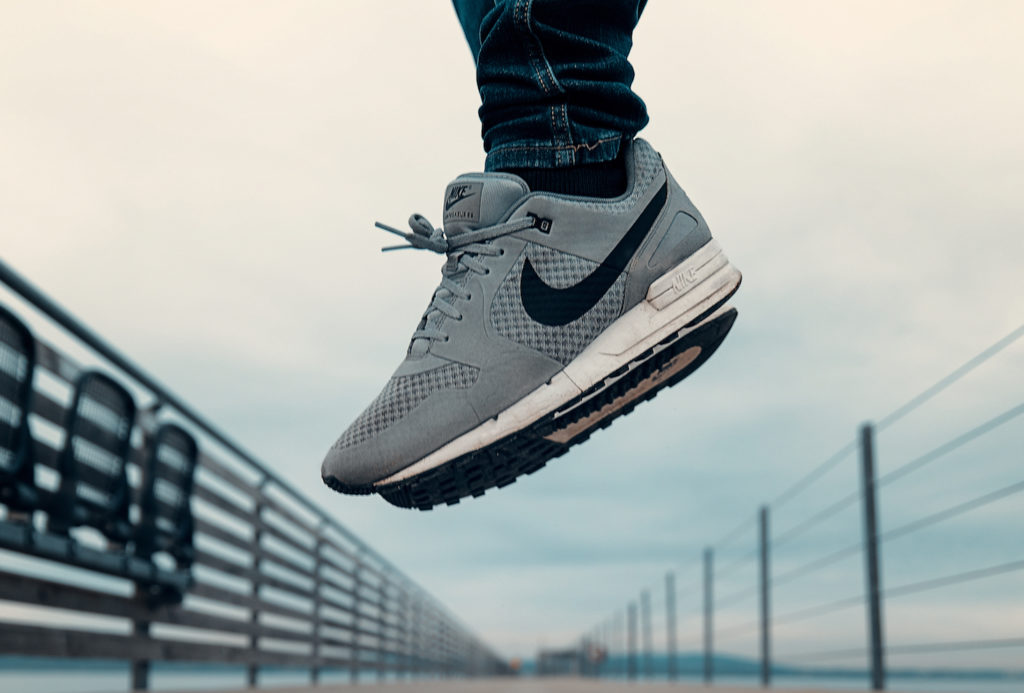Creative Thinking
How Nike Tells Its Brand Story Across Multiple Channels
By Shannon O'Neill on November 8, 2017
The idea of brand storytelling sounds great, but do you really know how to execute it for your brand and audience? For instance, what role does brand storytelling play across multiple communication channels? How do you retell that same story over time and across channels to different audiences? And, more importantly, is your brand message flexible enough to go the extra mile on social media or in interactive models?
The Nike "Just Do It" campaign, launched nearly thirty years ago, is a great example of the myriad ways a brand can use storytelling in their communications and content strategy. So what can content creators and other brands learn from Nike's storytelling approach?
Boil Down Your Idea
The beauty of the Wieden+Kennedy "Just Do It" slogan is that it resonates across cultures and experience. Everyone has felt the need to rebel, to push against stereotypes and accomplish the nebulous "it." But, even more simply, it takes the idea of a hero and a villain and creates a personal internal tension between the active you and the inactive you.
The very first "Just Do It" TV spot in 1988 featured a shirtless older man jogging across the Golden Gate Bridge.
He waves at a few cars, and as the camera closes in on a head-and-shoulders shot, he says to the camera, "I run seventeen miles every morning." Then, we cut back to a black screen and the white letters announcing, "Walt Stack. 80 years old." He follows this up with the joke, "People ask me how I keep my teeth from chattering in the wintertime . . . I leave them in my locker." Then, it cuts back to the black screen and the white letters: "Just do it."
The challenge and the victory are wrapped up nicely in unique brand story-an unlikely athlete who pushes his own personal limits. But, without stating it, the subtext is, "This 80-year-old man jogs every day; what's your excuse?"
The TV spots with a "Just Do It" message have evolved into various campaigns over the decades, from in-your-face (think of the 1990s when Michael Jordan, Andre Agassi, and Bo Jackson dominated the campaign) to more subtle messaging.
The most recent evolution for the TV spots is the "Unlimited" campaign, which features American track and field Olympic athlete Allyson Felix and American Olympic gymnast Simone Biles. In the Felix ad, her brother talks about what Allyson sacrificed to achieve her elite athlete status.
With footage of her performing at her peak and striking a piñata at a childhood party, his comments evoke the "Just Do It" narrative: "Truly fearless" because she's "not afraid to lose." A black screen comes up at the end with words flipping like a scoreboard: "Unlimited Grace," "Unlimited Determination," "Unlimited Dreams." Only at the end does the "Just Do It" tagline appear. The message is clear, yet imprecise. It not only speaks to athletes, it speaks to anyone who is up for the challenge, physical or mental-not to mention the power invoked by seeing a female athlete reach her personal peak. It gets at the internal struggle to try and fail, or just not try at all.
Understand Your Brand Philosophy
It doesn't get much simpler than "Just Do It." It is expansive and specific and Nike has played to both of these strengths over and over again. David Gianatasio writing for Ad Week sums it up this way:
"Exchanging tweets is no substitute for helping people think, dream, or in Nike's case do things in a new way. 'Just do it' was open to interpretation, and many folks adopted it as their private mantra. And not just in the realm of fitness and exercise. [. . .] As a result of the line's resonance, Nike's brand image soared."
While not every message, tweet, or image shared is the same, the "Just Do It" sentiment permeates-when we put our minds to something we are unstoppable-an idea that can apply to prowess on the field or as a team.
Nike has more social media followers than any other fitness brand, with over 7 million followers on Twitter compared to Adidas' just over 3 million. Emblazoned across the top of the page is, you guessed it, JUST DO IT. If @Nike isn't enough, you can also follow a number of other accounts tailored to your interests: NikeWomen, NikeBasketball, NikeFootball.
Just Do It. #nikewomen pic.twitter.com/PuD9gDj1qs
- NikeWomen (@nikewomen) October 22, 2014
But it's their content strategy and use of hashtags and inspirational quotes from athletes and various sources that engages sharing. For example, the #BelieveInMore hashtag used images and videos of women training and competing in sports.
Build Your Brand Story
The summer 2017 campaign featuring Muslim women athletes received a lot of positive press and reactions. This came along with a viral video campaign, "What Will They Say About You?", featuring Arab and Muslim women athletes training and competing. It's a flexible story and message, one that can expand and retract as needed.
In the ad, Nike unveiled their Pro Hijab, a head covering designed for female Muslim athletes. Within forty-eight hours, the video was shared 75,000 times on Twitter and viewed almost 400,000 times on YouTube.
The ad campaign featured figure skater Zahra Lari wearing Nike's hijab.
The ad had some detractors, who saw Nike's sale of the hijab as "support (of) the oppression of women," capitalizing on a politicized issue, or simply slapping their logo on a product that already existed. Fans and critics kept the conversation going. And this is what good brand storytelling is supposed to do-spark a conversation, engage with an audience, and get people talking.
Sara al-Zawqari, a spokeswoman for the International Red Cross in Iraq, summed up the response in this tweet:
When an ad touches on the insecurities of women in a society, digs deeper & becomes an empowerment tool rather than just a product #JustDoIt https://t.co/3Qh79aPigd
- sara al-zawqari (@SaraAlZQ)
February 18, 2017
This is emotional storytelling at its best-taking a negative and turning it into a positive by stacking the odds against an athlete and then using the brand message (and in this case product) as a positive solution to the problem they are facing.
The brand, the consumer need, the shoes, the styles may evolve but the ethos of fighting against social and personal stigmas will never age.
Connect Your Product to the Message
Nike even got into technology and interactive campaigns with its extremely popular FuelBand. Nike didn't just stop with the technology; it used its social media channels to motivate its audience and users to, you guessed it, "Just Do It"-in this case, in the form of whatever exercise or movement they were into. Not content to simply sell the FuelBand, Nike featured LeBron James and Serena Williams in commercials wearing the product on the basketball and tennis court. Why? Because who better to compare the best version of yourself to than two of the best athletes on the planet? Now your simple brand story has reached fairytale potential. It made a connection. You may not be able to play like James or Williams, but you can use the same technology. While the FuelBand no longer exists, it was the first wearable device to get people excited about sharing their fitness goals. They had a "Fuel Your Team" campaign where members could accumulate "Nike Fuel Points," compete against one another, and share their results. It's a simple equation of state-of-the-art fitness technology taking the Average Joe to the next level.
This summer, Nike became even more ambitious in its decision to bring together three of the world's best runners to attempt to break the two-hour marathon record. On May 4th, Nike tweeted:
Breaking the 2-hour marathon. Crazy? Yes. So we're doing it. #LIVE
Retweet or ❤ for @Nike #Breaking2 notifications pic.twitter.com/HDyROqDbtg
- nike love (@lover________sc)
May 6, 2017
The runners met on a Formula One racetrack in Italy, and it was live-streamed for the world to see. While none of the runners broke the record, that was never the point. The point was to create an event around the story of what it takes to attempt breaking a record: the innovation, the training, the determination. The campaign revolved around the story leading up to the race itself, with trailers introducing the audience to the runners. As Nike co-founder and track coach Bill Bowerman says, "The real purpose of running isn't to win a race, it's to test the limits of the human heart." And, to test the limits of how the public will view a brand building a story, the documentary "Breaking 2" aired on the Nat Geo channel in September.
Are you going to come up with a tagline as enduring as "Just Do It" for your brand? Probably not. But can you take your brand message and get it down to its essence? Absolutely. It doesn't have to be an elaborate Wes Anderson-style recreation each time; it just has to connect on several levels with your audience. Nike is a triumphant example of a strong, emotional brand storytelling strategy-using an internal struggle between the heroic you and the lazy you as the stage for their story.
For more stories like this, subscribe to the Content Standard newsletter.
Featured image attribution: Rafael


